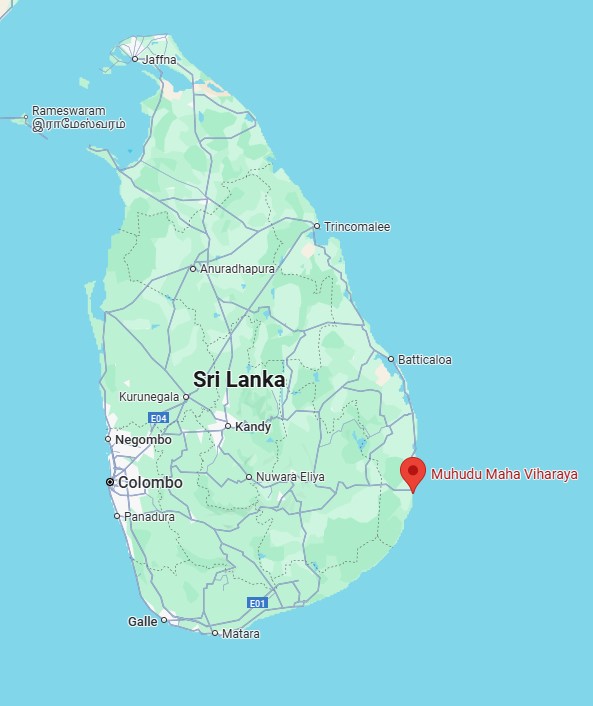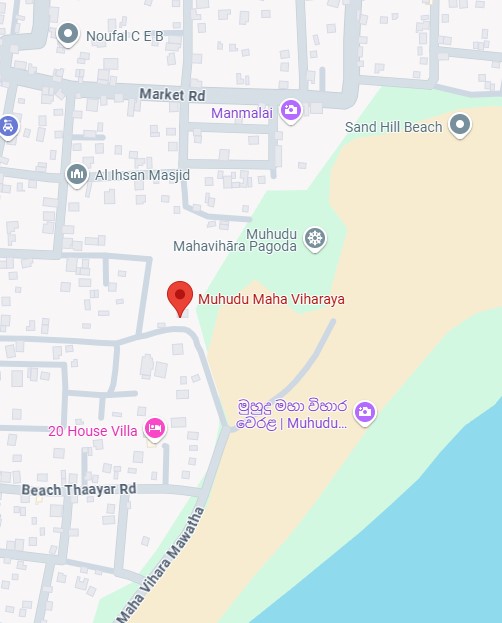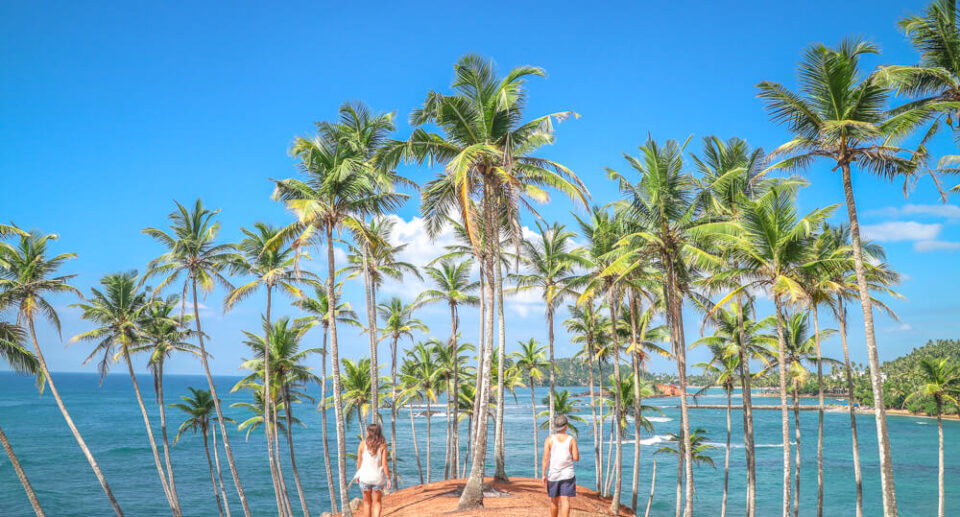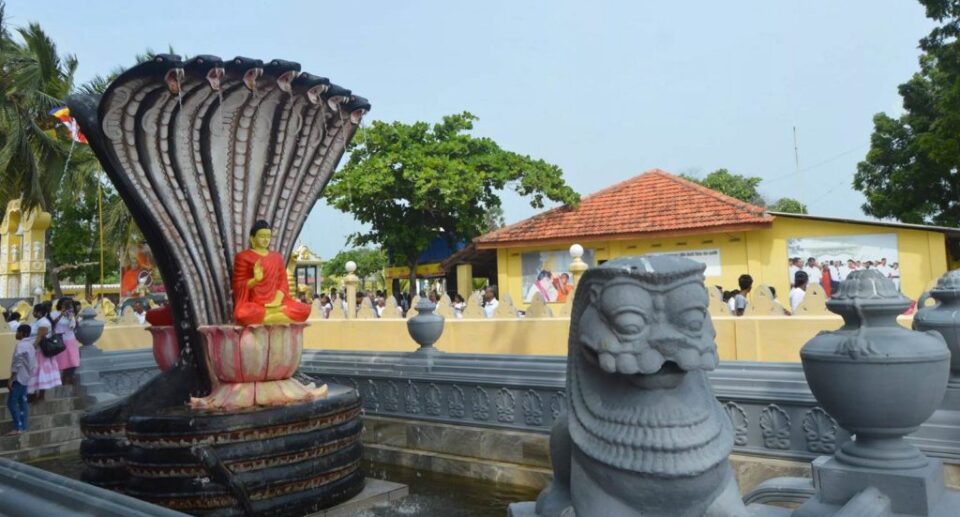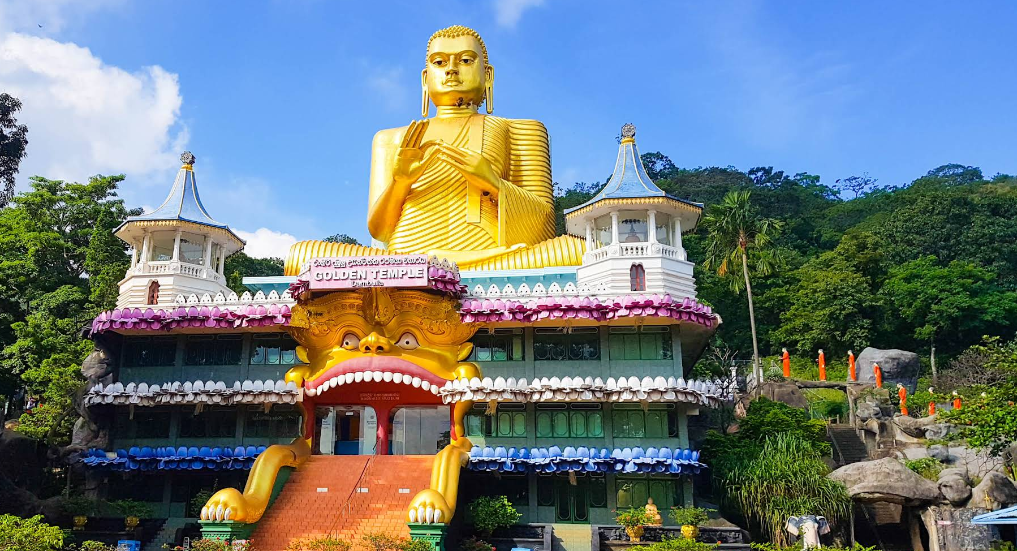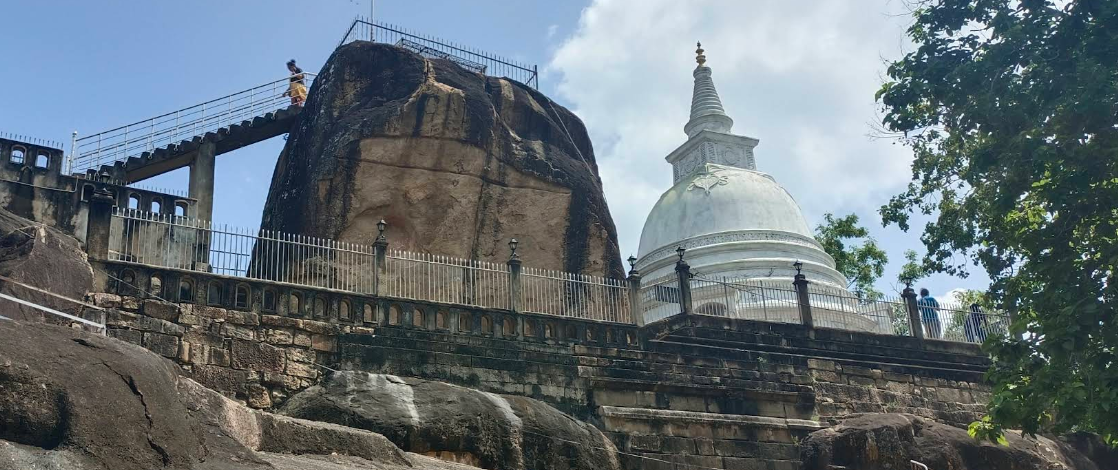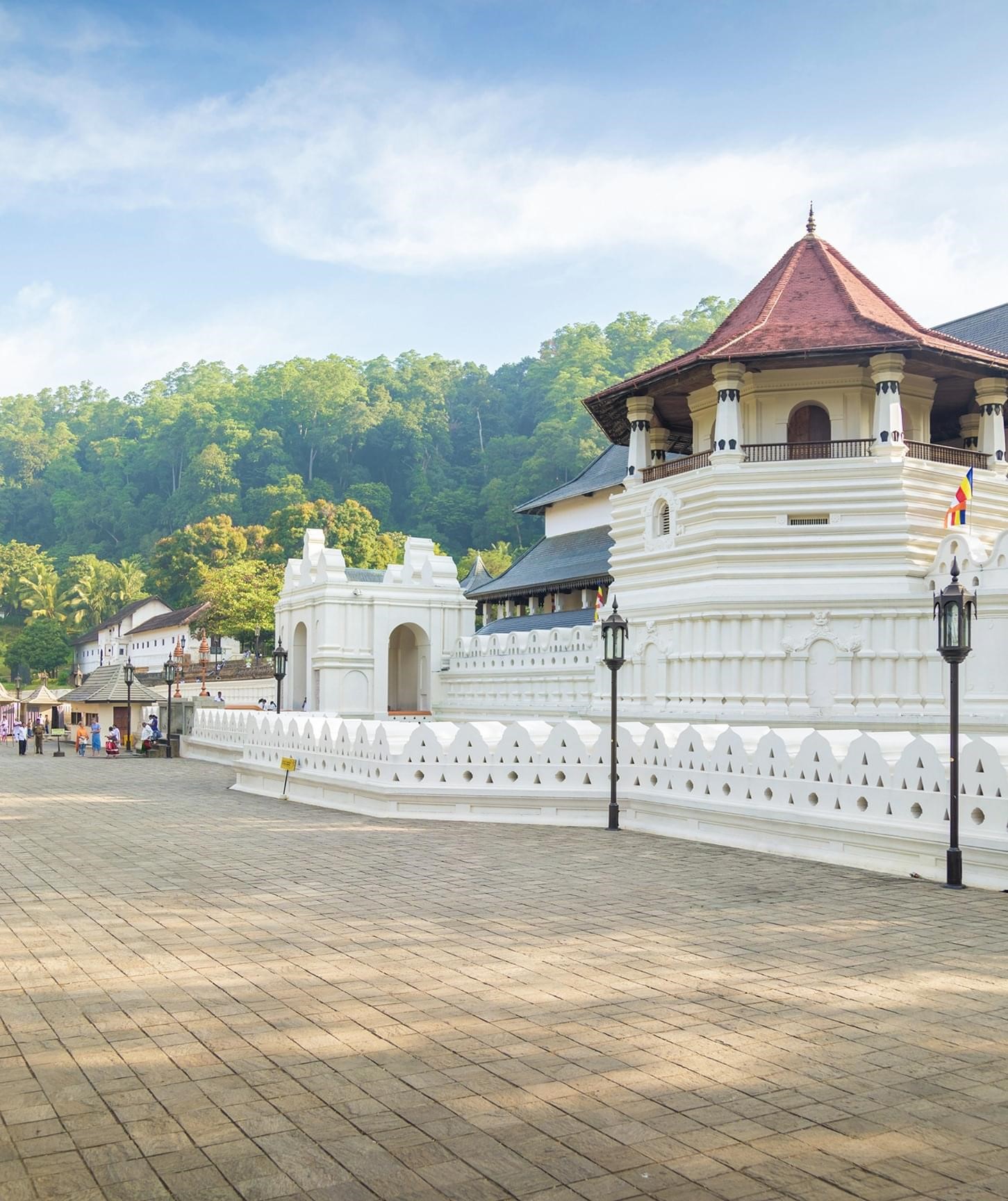Muhudu Maha Viharaya: The Sacred Temple by the Sea
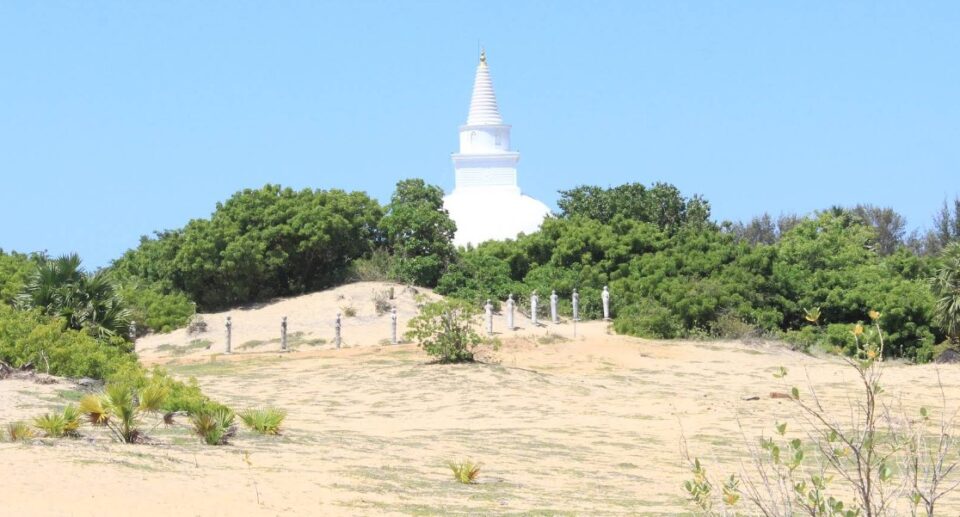
Located along the serene coast of Sri Lanka’s Eastern Province, the ancient and mysterious Muhudu Maha Viharaya is a Buddhist temple that is surrounded by legend, history, and cultural complexity. Located in the town of Pottuvil, along the coast of Arugam Bay, this sacred location is a building of spirituality and a testament to the island’s deeply ingrained Buddhist heritage.
Though partially buried under sand and lined with decades of weathering, the temple remains a place of profound religious significance and historical importance. With its white stupa, scattered remains, and timeless stories, Muhudu Maha Viharaya continues to attract pilgrims, tourists, and history enthusiasts alike.
Historical Background
According to ancient documents and local legend, Muhudu Maha Viharaya was built over 2,000 years ago by King Kavan Tissa (205–161 BCE), the Ruhuna king in the South Kingdom of ancient Sri Lanka. According to legend, the temple was built right at the spot where Viharamahadevi, the daughter of King Kelanitissa of Kelaniya, arrived after being set adrift on the sea as a votive gift to the gods.
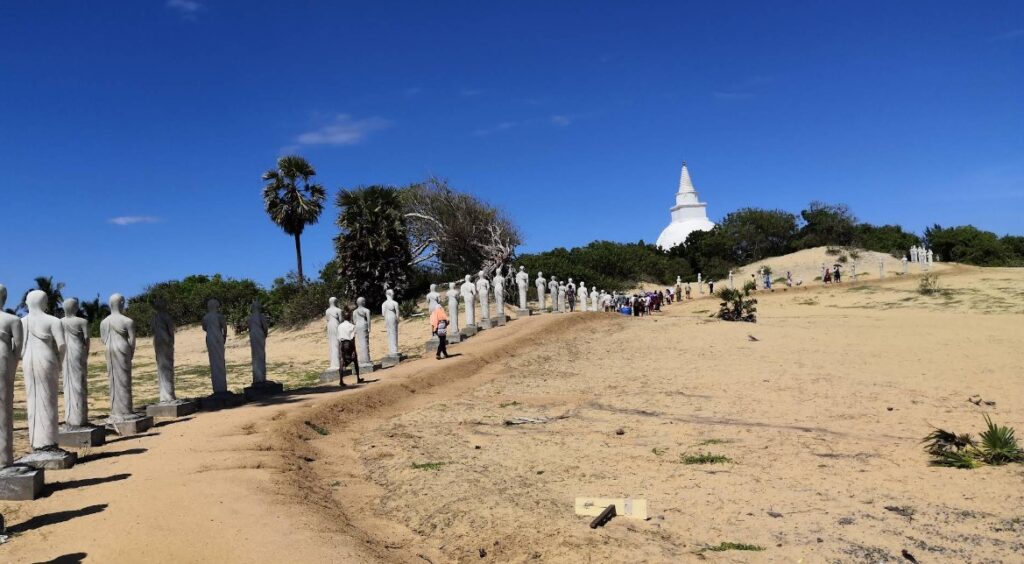
The Mahavamsa, the ancient Sri Lankan chronicle, relates how Princess Viharamahadevi was set afloat on a golden boat following the acts of her father that had angered the sea gods. Her vessel made its way up to the shores of Ruhuna, near Pottuvil, where she was received with respect by King Kavan Tissa. The two were then married, and their son, Dutugemunu, would become one of Sri Lanka’s greatest kings and saviors of Buddhism.
In commemoration of this divine event, King Kavan Tissa is said to have built the Muhudu Maha Viharaya, meaning “Great Temple of the Sea.”
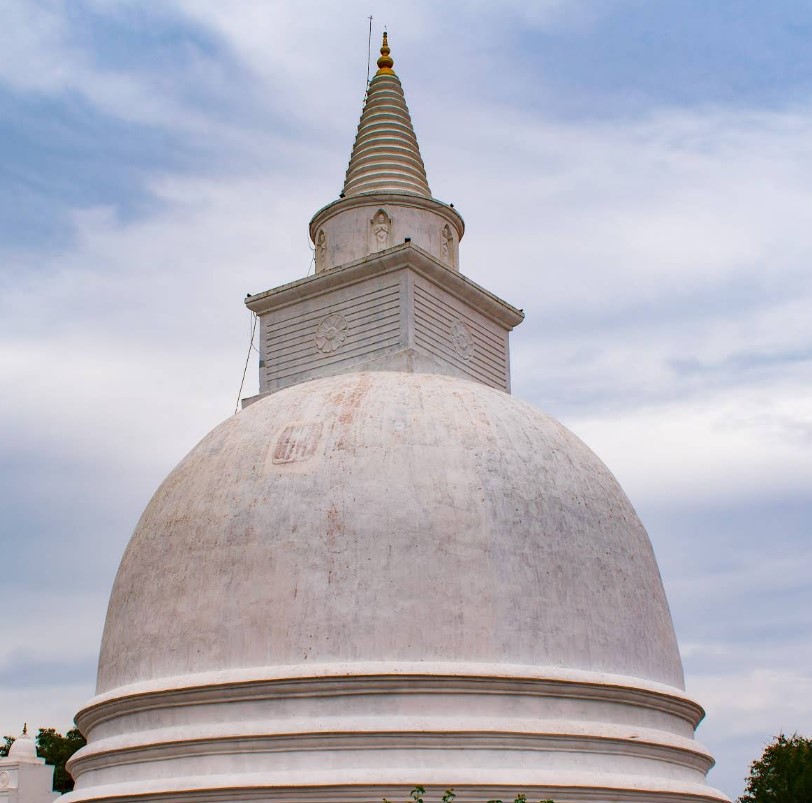
Location and Setting
Muhudu Maha Viharaya is conspicuous on the sand dunes of the Indian Ocean, a short walking distance from Pottuvil town, and around 4 kilometers north of Arugam Bay. The white dome stupa stands out against the golden sands and blue sky, with the soothing crashing of waves as a background for meditation.
Unlike the majority of land-based temples, the fact that Muhudu Maha Viharaya is located close to the ocean gives it a special nature, combining the tranquility of a religious site with the natural appeal of the coastline. The size of the area of beachland also suggests the temple was originally a part of a larger complex, much of which is believed to be buried under sand or lost to the past.
Archaeological Significance
Although only a part of the original edifice can be seen today, the temple still houses a number of important archaeological features. They include:
The Main Stupa: A plain but lovely structure that is still used for religious purposes.
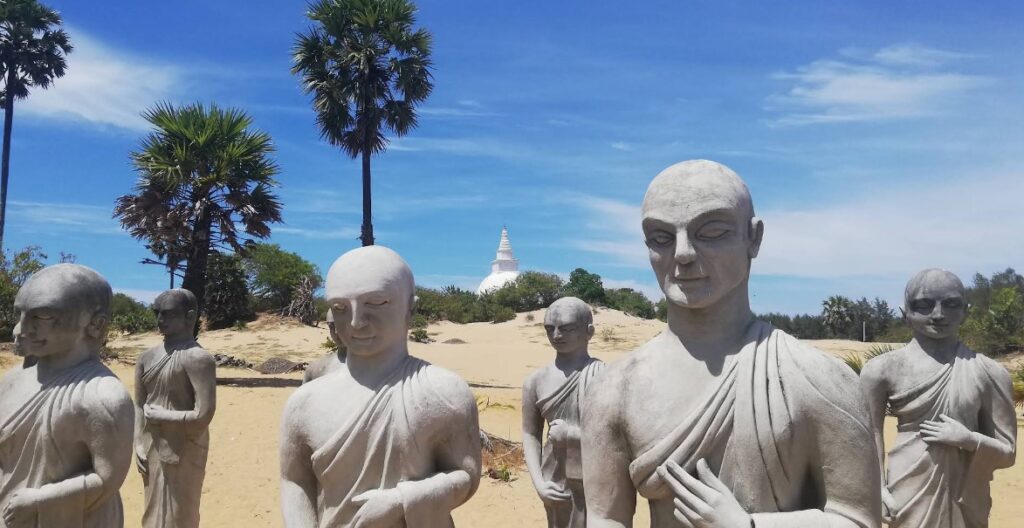
Remains of Ancient Shrines: Foundation of ancient structures and fragments of ancient walls that have been buried under sand.
Stone Statues: Portraits of the Buddha and royalty, a few of which were believed to represent King Kavan Tissa and Queen Viharamahadevi.
Guardstones and Pillars: Decorative stone structures with classical Anuradhapura-style paintings.
Archaeological surveys and excavations by the Department of Archaeology have uncovered evidence of a larger monastic complex such as evidence of stone inscriptions, image houses, and meditation houses. However, most of the site remains unexcavated and poised to reveal more about its past.
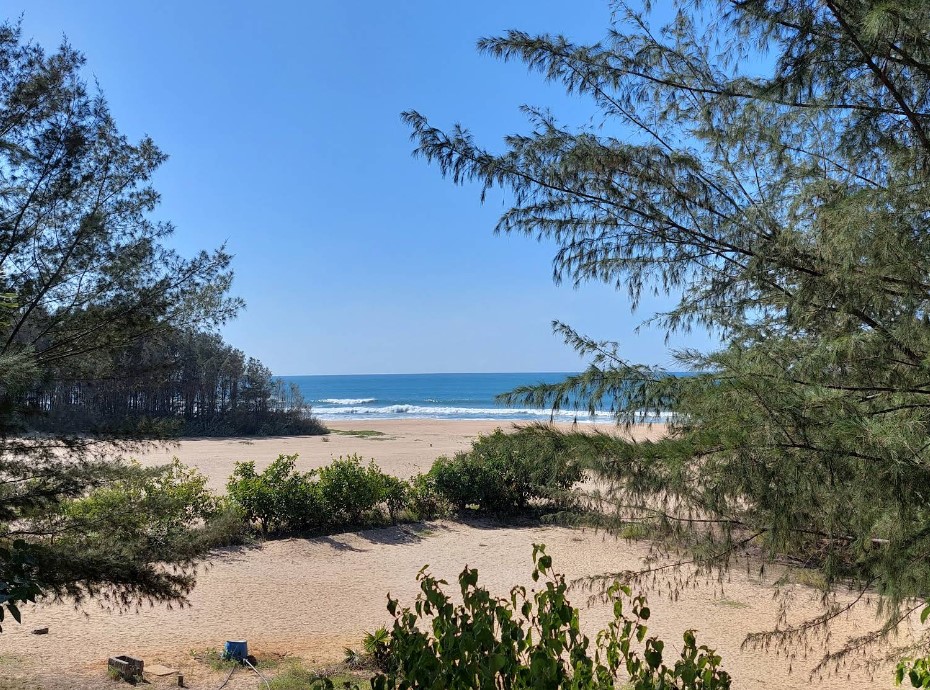
Religious and Cultural Importance
Muhudu Maha Viharaya is still an operational temple, particularly for Buddhists living in the Eastern Province. Pilgrims visit the temple to worship, present offerings, and meditate. Poya days, which are Buddhist festivals on full moon days, normally see more believers who travel from as far as the Southern and Central Provinces.
The temple is also a symbol of cultural reconciliation. In the island’s historically troubled zone, places like Muhudu Maha Viharaya remind one of the shared cultural heritage of the island. Although the Tamil, Muslim, and Sinhalese populations live in the Eastern Province, the temple is a symbol of religious harmony and long-term unity.
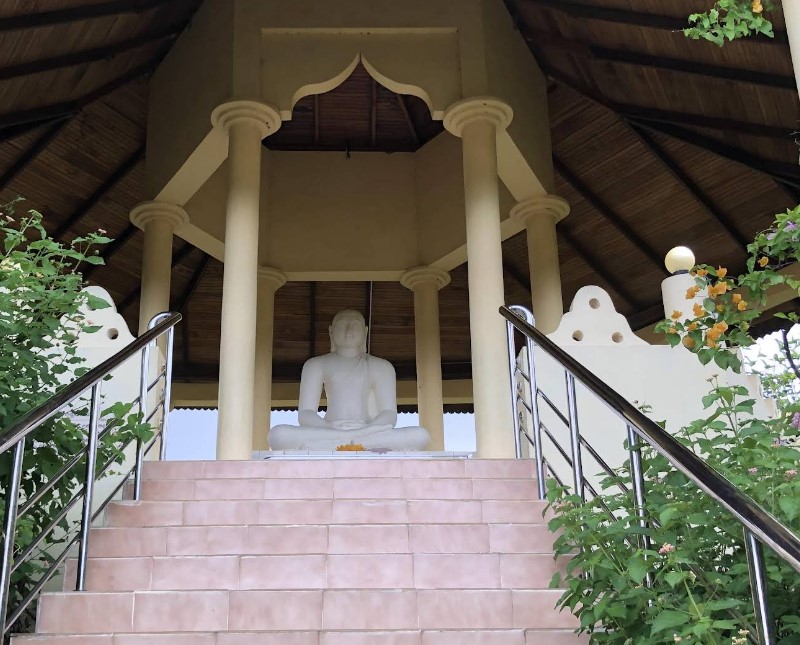
Controversies and Preservation Challenges
Muhudu Maha Viharaya also experienced land conflicts and preservation of cultural heritage in recent years. Claims of boundaries on the temple and encroachment by neighboring settlements fueled tensions and media attention. The location is being preserved from further degradation through sustained actions by the Sri Lankan government, the Department of Archaeology, and religious leaders.
Other issues are: Coastal erosion: The temple is situated in a dynamic beach environment, and erosion is threatening some of its foundations. Sand encroachment: Centuries of wind-borne sand have blanketed much of the ancient site, burying valuable relics under it.
Lack of infrastructure: Compared to other more famous ancient sites, Muhudu Maha Viharaya lacks proper visitor facilities, signage, and conservation management.
Despite these challenges, preservationists remain committed to preserving the cultural and religious heritage of the temple.

Visiting Muhudu Maha Viharaya
For visitors headed to the east coast, and more especially to the cool surf hamlet of Arugam Bay, a trip to Muhudu Maha Viharaya offers a cultural detour.
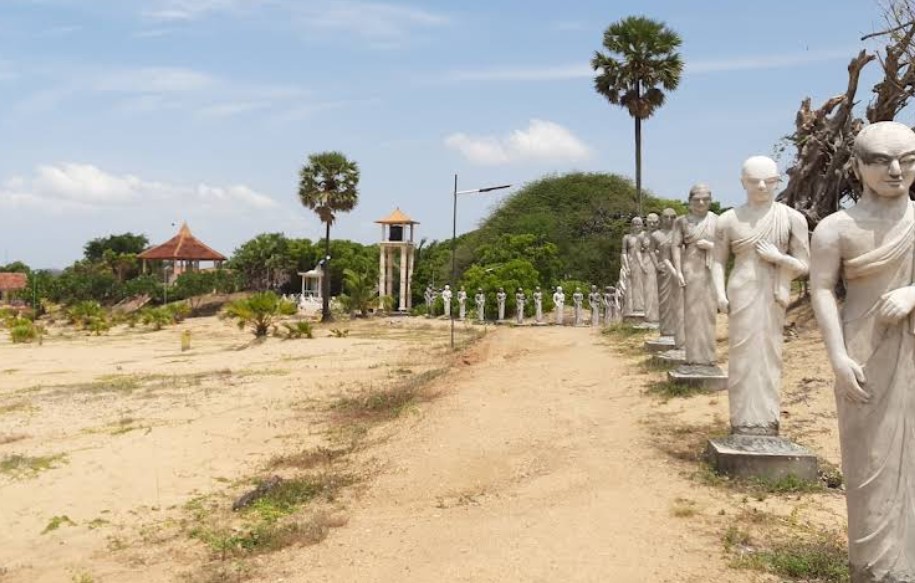
What to See: A peaceful stupa set atop dunes overlooking the ocean, Antiquated carvings and statues half-hidden in sand, Local devotees making offerings or chanting mantras, A chance to walk in the footsteps of mythological Sri Lankan legends
How to Get There:
From Arugam Bay, take a tuk-tuk (~10 minutes) or walk north along the beach. From the town of Pottuvil, the temple is accessible by local transport or even on foot.
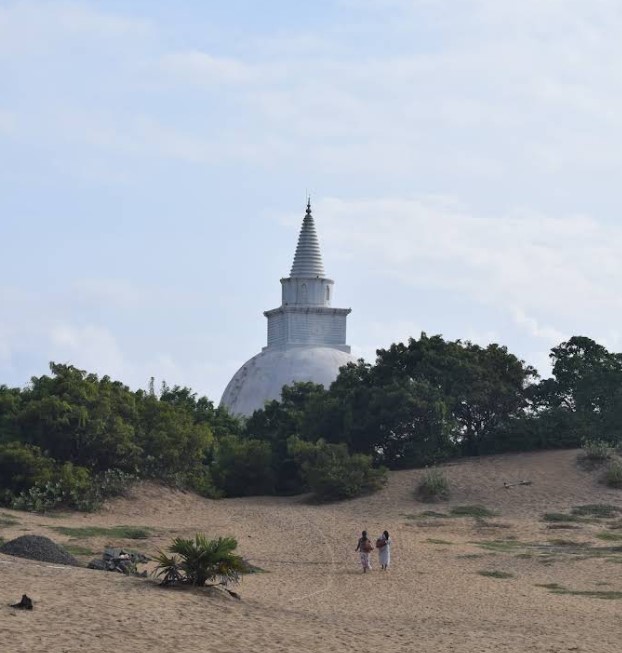
Visitor Tips:
Dress modestly (shoulders and knees covered) Remove shoes before entering temple compound Do not climb or touch ancient statues. Go early morning or late afternoon to avoid the heat
Legends and Legacy
The tale of Viharamahadevi arriving at Pottuvil and giving rise to one of Sri Lanka’s most important dynasties is more than folklore.it is part of the island’s national identity. The legacy of her son, King Dutugemunu, and his role in preserving Buddhism and unifying the country begins, symbolically, at Muhudu Maha Viharaya.
This overlap between monument and myth gives the temple a religious depth that resonates deeply with Sri Lankans of all religions. It is not a temple in the classical sense, but a moment-in-time narrative that binds the visitor of today back to an instance of godly destiny.
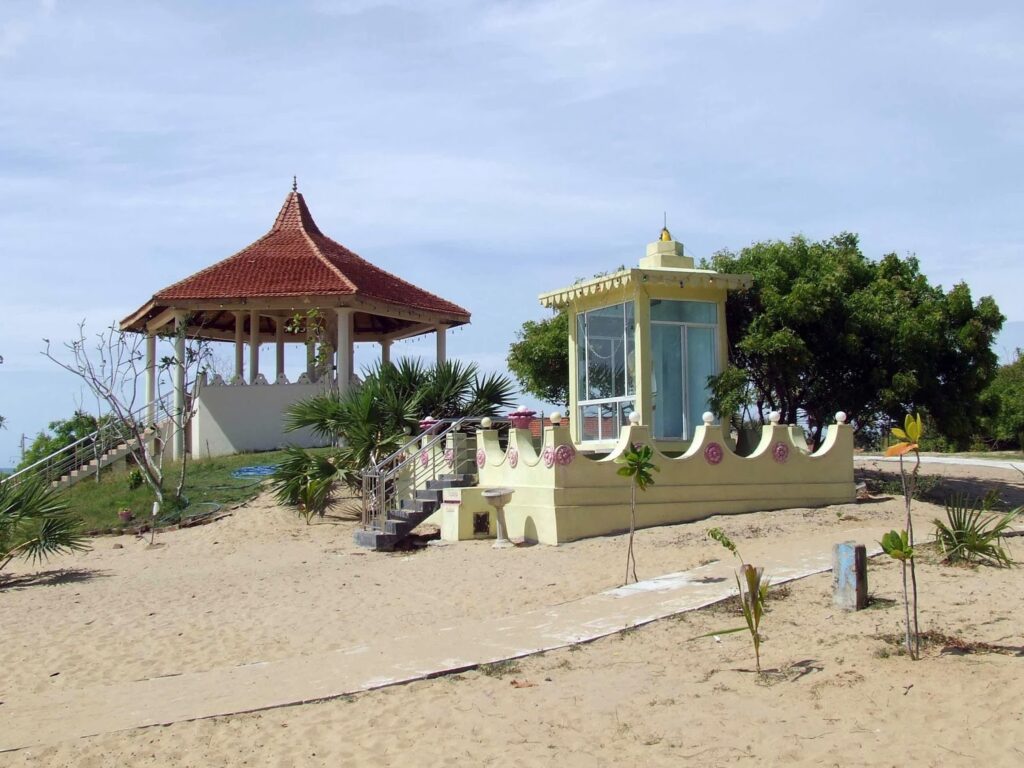
Location of Muhudu Maha Viharaya
- Temple Name: Muhudu Maha Viharaya
- Village/Town: Pottuvil
- District: Ampara District
- Province: Eastern Province, Sri Lanka
- Nearby Landmark: ~4 km from Arugam Bay
Ways to Get There
1. From Colombo
By Private Car or Taxi:
- Route: Colombo → Kandy or Ratnapura → Badulla → Monaragala → Pottuvil
- Distance: ~320–350 km
- Time: ~6.5–8 hours
- Best Route (scenic): Via Ratnapura and Wellawaya (A4 road)
Tip: A 4WD or well-maintained car is recommended for a smoother drive through hilly or rural areas.
By Bus:
- From Colombo (Pettah), take a direct night or day bus to Pottuvil or Akkaraipattu.
- Some buses continue to Arugam Bay.
- From Pottuvil Bus Stand, take a tuk-tuk (5 minutes) to the temple.
Duration: ~9–10 hours
Cost: Rs. 700–1,200
By Train (Partial Route):
- Take a train from Colombo Fort to Ella or Badulla.
- Then, take a bus or taxi to Pottuvil (3–4 hours).
- This is scenic but longer.
From Arugam Bay (nearest tourist town)
- Distance: ~4 km
- By Tuk-Tuk: 5–10 minutes (Rs. 300–500)
- By Bicycle/Scooter: Easy 15–20 minute ride
- By Walking (optional): ~45-minute beachside walk
